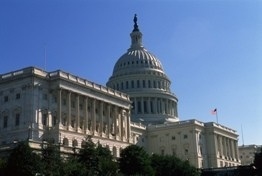
By Jack Chang
RISMEDIA, Dec. 2, 2008-(MCT)-Since the U.S. economy went into freefall in September, the federal government has announced hundreds of billions of dollars in bailouts and economic stimulus packages in attempts to shore up banks and reignite the economy.
The latest astronomical figure is an $800 billion, in a package announced Tuesday by the Federal Reserve and the Treasury Department. Many are wondering, however, how long this spending can go on.
Here are a few answers:
Q: First of all, where does the money come from?
A: The bulk of the cash has been put up by lenders buying U.S. Treasury Department securities such as bonds, notes and short-term bills. Economists estimate that international investors have purchased as much as three-fourths of such securities, with many of them flocking to relatively safe U.S. investments amid global uncertainty.
Some of the spending also has been financed by securities issued by agencies such as Fannie Mae or Freddie Mac.
Q: How much money has the U.S. government spent or loaned out since September?
A: Congress passed in early October a $700 billion bailout plan that gave the Treasury Department sweeping powers to buy distressed assets and keep banks afloat. About half of that money has already been loaned out.
The government also has injected $45 billion into a large bank, Citigroup, and $150 billion into a large insurer, American International Group.
On Tuesday, the Federal Reserve and the Treasury Department announced the latest round of spending, to the tune of $800 billion. One program would lend some $200 billion to holders of securities backed by consumer loans such as credit card loans and auto and student loans. The other program would spend up to $600 billion buying mortgage-backed assets from government-sponsored lenders such as Fannie Mae and Freddie Mac.
President-elect Barack Obama and the Democratic-controlled Congress also have promised to pass a major stimulus plan that could cost $300 billion or more.
Q: How much of that money won’t be repaid?
A: So far, as much as $100 billion of the original bailout package used to buy assets at a loss, according to economist Barry Bosworth of the Brookings Institution, a left-of-center research group in Washington. Everything else, at least theoretically, will be repaid or could be recouped.
Q: How much longer can the government keep spending?
A: A lot longer, economists say. International investors will keep buying Treasury securities even though the interest rates on many of them are close to zero percent.
Q: Why?
A: The U.S. economy is still considered the world’s strongest and most stable, and investors still believe the U.S. will pay back its loans. They know they’ll at least get their money back even if they don’t make much in interest income.
Ironically, the U.S. has become the haven from the global economic storm, although the financial mess started here. That explains why the dollar has been climbing in value around the world while other currencies have plummeted.
Q: But should the U.S. government be spending so much money?
A: Most economists say yes. Although the federal budget deficit is projected to hit a trillion dollars next year, incurring massive debt at this point is eminently preferable to letting the U.S. economy slide into deep recession.
America can worry about cutting deficit spending when the economy starts growing at a healthy clip, economists said. The goal now is to get banks lending and consumers spending again.
Q: But will all this work?
A: It’s better than doing nothing. And letting firms such as Citigroup fail would send wider shock waves through the economy that could cost millions of jobs.
© 2008, McClatchy-Tribune Information Services.










